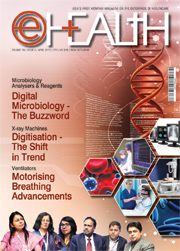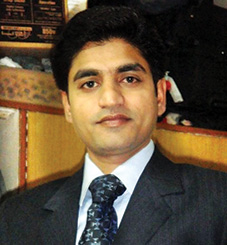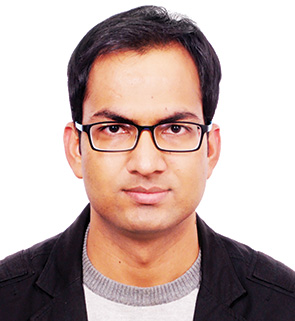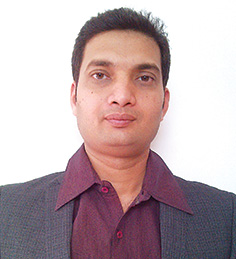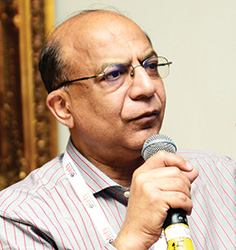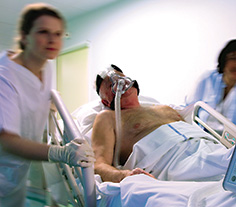
Indian ventilators market is poised to grow at a healthy rate in the coming years as more and more hospitals and nursing homes develop specialised care, says Anshuman Ojha of Elets News Network.
The roots of positive airways mechanical ventilation can be traced to World War II with the needs for pilots to breath at higher altitudes. Ventilation therapy then made accelerated progresses during the polio epidemic in the 1950s.

Nowadays, mechanical ventilation is indicated when a patients spontaneous ventilation is inadequate to maintain life. It is also indicated as prevention for imminent collapse of other physiologic functions, or ineffective gas exchange in the lungs. Mechanical ventilation in hospitals and in the field have contributed to dramatically improve the life expectancy of patients during and after surgeries, or suffering from accidental disrupted lungs function or finally of patients suffering from acute chronic pulmonary diseases.
More recently home care applications previously considered as comfort-improving therapies are showing premier medical interest in the race to extend peoples life. For instance, lower end mechanical ventilators devices known as CPAP and used at night to treat sleep apnea”a disorder once considered a simple discomfort and which is now recognized as a source of major medical complications such as increased blood pressure and diabetes”are increasingly popular and effective.
Global Market

The global ventilators market is expected to grow at a CAGR of 6.6 per cent from 2013 to 2019, to reach an estimated value of US$ 4,248.7 million by 2019.
According to the report by Transparency Market Research, the global mechanical ventilators market has already witnessed significant growth in the past two decades. The basis of this growth has been technological innovation. The current market is growing due to an increasing preference for and usage of home-care ventilators and portable ventilators. One of the key reasons for the growth of the global mechanical ventilators market is the disposable apparatus used in these devices. Improvements in the structural design that is combined with technological innovation and a wider range of usage settings on mechanical ventilators has greatly changed the construction, nature of use, and rate of use of disposables in the devices.
Indian ventilators equipment market is growing at a CAGR of 12 per cent and is estimated at `465 crore in 2013. The high-end segment market is growing at the rate of 11 per cent, whereas the mid-end market is growing rapidly at the rate of 15-18 per cent
The market for mechanical ventilation in Europe and the United States is mainly a replacement market. A majority of the hospitals in these regions have budget constraints; as a result, they purchase ventilators only when it is necessary, thus restricting the market demand. The fact that the replacement of the ventilators is nearly impossible unless they fail to work further hinders the market growth. In such a situation, technological innovation would spur growth.
Better understanding of physiology, anatomy and disease patterns are also triggering a new wave of innovation in mechanical ventilation
The growing rate of neonatal mortality in emerging economies of China, Singapore, Thailand, and India has prompted growth in the Asia Pacific region. The region also experiences growth in the global mechanical ventilators market through other factors such as economic development and reducing unmet medical needs. The highest growth is shown by the Asia Pacific region, which has a CAGR of more than 7 per cent within the forecast period.
Indian ventilators equipment market is growing at a CAGR of 12 per cent and is estimated at `465 crore in 2013. The high-end segment market is growing at the rate of 11 per cent, whereas the mid-end market is growing rapidly at the rate of 15-18 per cent. The market is dominated by Carefusion, Draeger Medical and Maquet Medical.
Other aggressive players include Air Liquide, Covidien, Hamilton, Life Care, Nidek, Max Meditech, Medion, Philips, Rohanika, Schiller, Skanray, Trivitron, Zigma,
Indian ventilator market is poised to grow at a healthy rate in the coming years as more and more hospitals and nursing homes develop specialized care. Also, the budget allocation towards the overall healthcare sector is in an increasing mode resulting in better infrastructural facilities all across the country.
However, the poor quality of the devices used is among the factors hampering the growth of the market. Besides, as the government is not strict about the import of neonatal ventilators in India, no tab is kept on the quality.
The market is also witnessing an increase in awareness and rapidly rising brand consciousness in critical care area of hospitals. There is a definite preference for better presentation of data in cognitive form to reduce data overload. The availability of superior technological features coupled with good after-sales service accelerates the growth.
Market Trend
The healthcare industry witnessed a paradigm shift from providing hospital care to home healthcare over the last decade. This has led to the development and adoption of HMV systems to improve the patients quality of life. Patients in need of continual or life-long ventilator support are considered a cost burden on hospital administration. Hence, to reduce hospital costs, there has been a growing trend of shifting such patients to non-hospital settings.
Growth Drivers and Challenges
Ventilators like many other medical devices have undergone enormous changes thanks to the technological developments. The changing technology, market dynamics, disease patterns have all contributed to the metamorphosis of ventilators. The stringent regulatory and statutory compliance requirements also catalysed the innovation trend of ventilators. It is of great importance to understand the medical device market drivers so as to assess its impact on ventilators.
Ventilators market has several growth drivers, of which the increasing ageing population is one of the major drivers. The ageing population is more susceptible to developing respiratory diseases. The growing number of aged patients in ICUs has raised the demand for mechanical ventilators.
Emergences of new generation sensors, single chip solutions and new generation pneumatic components have impacted the design architectures of ventilators. Ventilating infants and newborn babies makes special demands on ventilation technology, which cannot be met partially by equipment designed for adults. The specific challenges of neonatal ventilation are smaller inspiratory volumes, faster changes in the gas flow and more particularly protection against too high airway pressures and too large mandatory breath volumes.
Patient and operator safety is prime importance which has been regulated by the certifying authorities which has imposed huge challenges for the medical device manufacturers. Better understanding of physiology, anatomy and disease patterns are also triggering a new wave of innovation in mechanical ventilation.
The challenge for future research in the area of ventilator technology is to generate controlled clinical studies to support its application. With the impact of financial constraints on healthcare, research will also need to examine the economic issues related to the application of newer modes of mechanical ventilation. Integrating the vital signs monitoring with ventilation in conjunction with other assessment parameters may prove to be useful tools to measure the impact of interventions such as suctioning, positioning, muscle reconditioning, weaning techniques, and comfort measures on mechanically ventilated patients.
Be a part of Elets Collaborative Initiatives. Join Us for Upcoming Events and explore business opportunities. Like us on Facebook , connect with us on LinkedIn and follow us on Twitter , Instagram.




